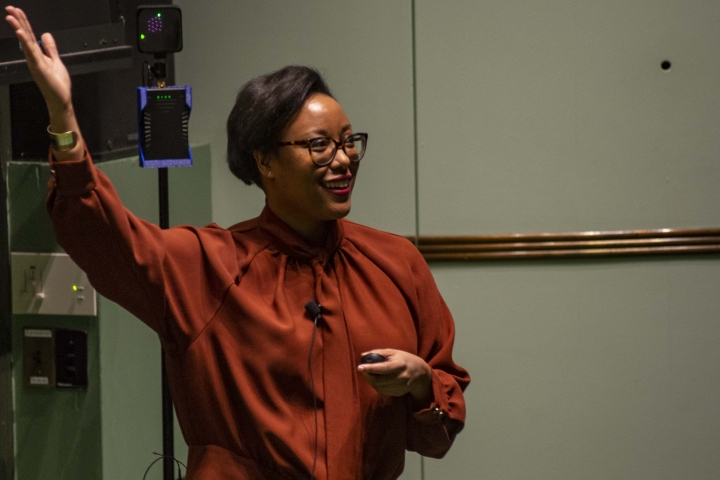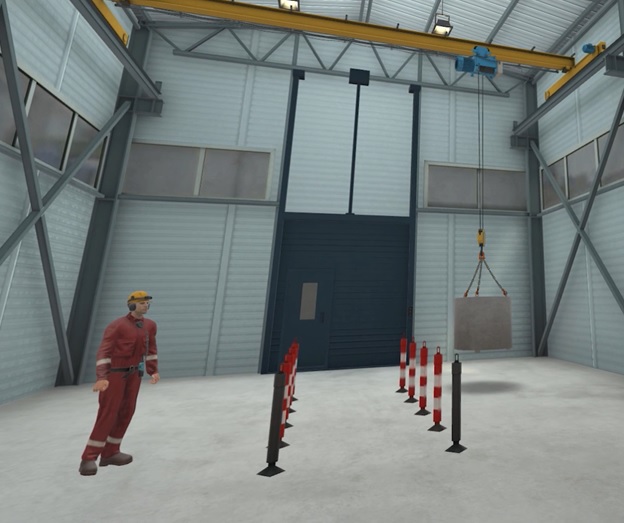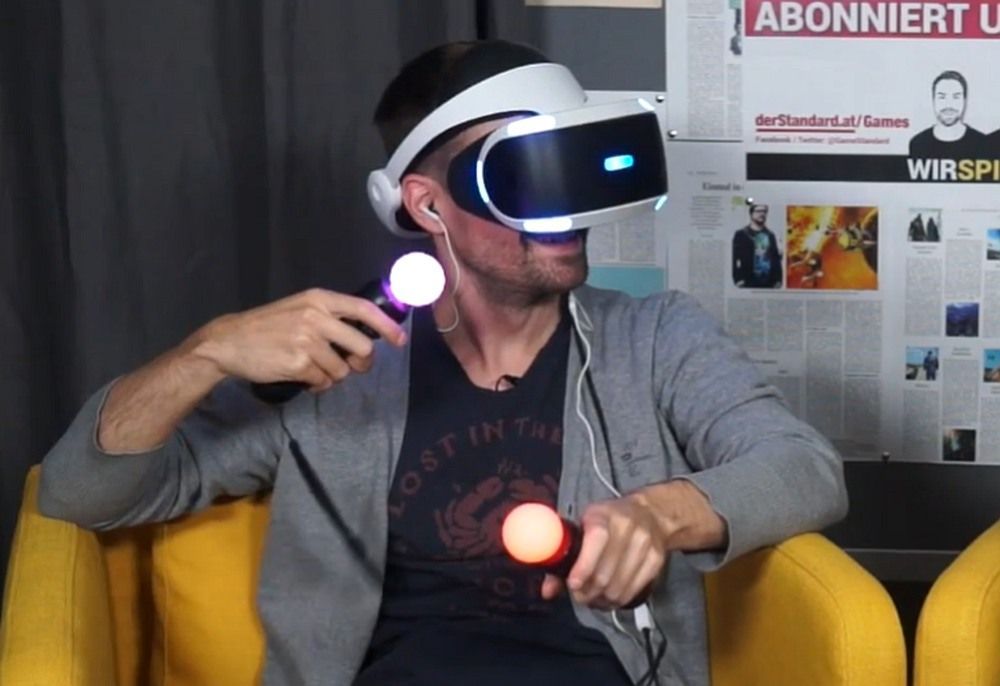Hannah Yoo/Daily
Your name is Michael Sterling and you are 6 years old. You are sitting cross-legged on the rug of your first-grade classroom, watching three white children play with colorful plastic blocks. One of the kids has built a wall, while the other two launch blocks — “fireballs,” in their childish fantasy — at the wall, trying to knock it over. Turning to you, the boy farthest to your right urges you to throw a fireball, one the color of your skin.
“Yours would be the scariest because yours is black, and black is always the scariest,” he says.
You reach down to pick up a block, then you toss it across the rug. The teacher, who is standing by a table to your left, immediately whips her head around and shouts your name.
“Mike, look at me!” she snaps. “You’re being dangerous and you’re going to hurt someone.”
Michael Sterling is the central character of a virtual reality experience, 1000 Cut Journey, designed by Courtney Cogburn, University of Michigan alum and associate professor at the Columbia School of Social Work.
Meant to foster awareness of the day-to-day racism faced by Black Americans, 1000 Cut Journey walks the user through three different scenes, allowing them to experience subtle and overt racism from Sterling’s perspective as a child, adolescent and adult.
Cogburn discussed the project Friday afternoon at Rackham as part of the Center for Academic Innovation’s Winter 2020 XR Speaker Series, an initiative showcasing developments in the field of virtual reality. To kick off her talk, titled “XR: A Critical Analysis and Transdisciplinary Approach to Development and Application,” Cogburn explained why she first became interested in virtual reality as a tool for combating racism.
According to Cogburn, racism is a visceral experience with tangible, physical effects. Much of her previous work has focused on cultural structures as a threat to health. Thus, she said virtual reality is a powerful way to immerse privileged people in that bodily discomfort.
“I was trying to imagine a way that I could complement my scientific, empirical work with something that was more visceral or emotional,” Cogburn said. “How could I give a gut punch to people, to give them a reality check around where we actually are as a society?”
The benefit of virtual reality, Cogburn said, is that it enables perspective-taking, reducing bias. But in some cases, she noted virtual reality can become a kind of “trauma porn,” in which people feel good about feeling empathy.
Cogburn stressed her goal is to do more than simply encourage empathy. Instead, she said she wants her work to translate into actual anti-racist behavior.
“You simply feeling bad is not a contribution to society,” Cogburn said. “What I’m really pushing for in this work is, how do we think and act differently? How do we change the way that we analyze racial issues in society?”
According to Cogburn, the main target audience of her virtual reality experience is white liberals. She said for white liberals, progressiveness can become more about appearance than actual action.
“This is the group that’s probably most likely to put on a headset and voluntarily go through an experience of racism, and maybe they’re the needle that’s most likely to move,” Cogburn said.
Touching on the conception of 1000 Cut Journey, Cogburn said she and her colleagues relied on data – such as research proving racial bias in the hiring process – as well as anecdotes to create the fictional tale of Michael Sterling.
She emphasized the interdisciplinary nature of her project, a collaboration between Columbia University’s School of Social Work and Stanford University’s Department of Communication. Creating a virtual reality tool like 1000 Cut Journey requires the collaboration of people with many different skill sets, Cogburn said, because racism cannot be approached from a single disciplinary perspective.
Rachel Niemer, director of outreach and access at the Office of Academic Innovation, demonstrated the virtual reality tool in front of the audience. She wore a headset and held two controllers. A two-dimensional version of what Niemer was experiencing was projected onto a screen behind her.
The virtual reality experience begins with the avatar of 6-year-old Michael Sterling standing in front of a mirror. A narrator states Michael Sterling’s name and age. The voice encourages the user to wave to the reflection in the mirror and become familiar with the controls.
The scene then changes to Sterling’s first-grade classroom. At this point, Niemer, in Sterling’s digital body, faces racist comments from the other children and disproportionately harsh discipline from the teacher.
Next, the experience transitions to 15-year-old Sterling waiting for a friend before his basketball game. A desktop computer in the corner of the virtual room flashes a headline about an unarmed black man being arrested by cops. Sterling’s friend arrives and the two leave the house.
Almost immediately, police pull over Sterling and tell him to get down with his hands up and his eyes to the ground. Upon hearing the police’s shouts, Niemer immediately complied, kneeling on the floor of the auditorium and staring at the carpet.
The final scene shows Sterling, a 30-year-old Yale graduate, at a job interview. A suspicious secretary at the office asks Sterling why he is there. He places his resume in a box and heads to the waiting room, where another candidate, a white man, is seated.
The boss comes out and immediately assumes the white man is the Yale graduate. When the secretary corrects him, the boss turns to look at Sterling and is visibly disappointed. The boss decides to interview the white man first.
At the end of the virtual reality experience, Sterling is standing in his bathroom at home when his phone rings. It’s the boss, telling Sterling he didn’t get the job because he wasn’t a good fit for the company’s culture.
After the virtual reality demonstration, Niemer, Cogburn and English professor Sara Blair, who incorporated 1000 Cut Journey into one of her classes, gathered for a discussion.
Sterling’s avatar can’t talk and the visuals make him seem isolated, and though these aspects were byproducts of technical and financial constraints, Cogburn said they ended up representing the erasure of Black men in the United States. Blair said many of her students who experienced 1000 Cut Journey believed these characteristics to be intentional.
“They assumed that was part of the design,” Blair said. “That sense of constraint and of a world that feels too small to contain the movement of your body.”
Another noteworthy feature of 1000 Cut Journey, Cogburn said, is the element of choice. For example, even though the user is encouraged to throw the block, there are no explicit instructions. That self-determination shapes the success of experience.
“When you engage in that agency, when you make those choices, when you use the body, when you grab the blocks, when you get down on your knees, you have a stronger experience, a more visceral experience,” Cogburn said.
Niemer pointed out the audio was an impactful part of 1000 Cut Journey, especially during the police scene.
“I didn’t even notice whether people were actors or avatars, that was not salient for me,” Niemer said. “I was surprised at how powerful the audio was. When I heard the sirens, I jumped.”
Niemer said 1000 Cut Journey contextualized racism for her in a poignant way. She said as a member of the target audience — well-meaning, often well-educated white liberals — she’s studied racism extensively in an academic context, having read about, for example, job interview bias, but has never been able to experience it physically.
“I’ve read lots of literature,” Niemer said. “I’ve got the cognitive knowledge. The experience was completely different.”
Cogburn said she’s been struck by the reactions various users have to the experience. According to Cogburn, one Black woman refused to kneel when instructed to by the officers. Instead, she stared them defiantly in the eyes. During the job interview scene, one white woman instinctively stood and stuck out her hand when the boss walked in, but was met with a blank stare and no handshake.
Some behavioral choices, like how long the user keeps their head down when confronted by the police, can be quantified, Cogburn said. She explained her team is working on tracking some of these measures across demographic groups.
Concluding the discussion with Blair and Niemer, Cogburn reflected on how there are many layers to 1000 Cut Journey. Not only is there the experience of the user, but there can be multiple levels of consciousness. For example, the experience of Black people watching white people experience racism is worth considering.
The conversation then opened up to the broader audience. One woman of color told Cogburn the experience had been powerful and triggering for her, evoking physical and emotional memories of trauma.
Cogburn said 1000 Cut Journey can indeed be painful for those who have experienced racism. She said when the piece was first unveiled at Tribeca Film Festival, one Black man took off the headset during the police scene because he hadn’t heard their orders and was afraid of what would happen if he didn’t comply.
Cogburn said subjecting people to this type of emotional stress is challenging and raises questions about the ethics of virtual reality. In response to an audience member’s question about implementing a code of ethics specifically for virtual reality, Cogburn said she’s absolutely on board with the idea. She said there are multiple issues at stake — not only can virtual reality evoke emotional distress, but data from people’s virtual reality experiences should be protected.
“In fact, we need laws, more formal regulation,” Cogburn said. “The amount of data that gets collected when you’re in that VR headset is pretty astounding, it almost creates a fingerprint of your movements, you’re so unique. You can eventually be identified in some ways.”
Cogburn pointed out what feels like trauma to the user may in fact just be discomfort at not having felt a certain emotion before.
“It might feel like trauma, just because you’ve never had to deal with it, but that doesn’t mean that’s the level we’re reaching,” Cogburn said. “Some of that discomfort is the point and is absolutely necessary, but that’s difficult to delineate, where is that line?”
Interestingly, Cogburn said, some white users of 1000 Cut Journey reacted by focusing on perceived inaccuracies — engineers critique the graphics, teachers feel offended by the first grade scene, police officers feel misrepresented. Cogburn suggested it can be hard for people to step back and understand the big-picture, emotional meaning of the story.
Rackham student Caitlin Helgesen said she appreciated the way Cogburn considered all the implications and nuances of using virtual reality to build empathy.
In addition, Helgesen said she was impressed by the interdisciplinary nature of the project, which was more than just an engineering feat because of its focus on social impact.
“It wasn’t the engineers you would normally expect to see at a VR or SR event,” Helgesen said. “The application outside of just, how can we develop XR technologies. How are we going to use these in the real world and make a big difference?”
Helgesen said she would be interested in experiencing 1000 Cut Journey for herself.
“Even just watching second hand, I was very moved,” she said. “I can’t imagine how powerful that is when you’re actually in the headset.”
Quelle:
Foto: Dr. Courtney Cogburn speaks at Rackham in regarding the importance of social realities of XR Friday afternoon
https://www.michigandaily.com/section/research/virtual-reality-tool-allows-people-experience-anti-black-racism-firsthand




